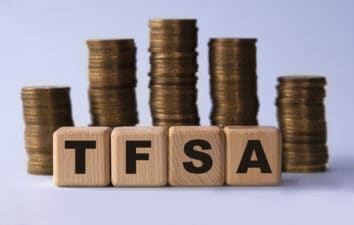The recent surge in volatility has many investors concerned over the health of the bull market, which is just a ~10% decline away from coming to an end. The S&P 500 Composite Index is flirting with correction territory yet again, while the TSX is ~7% down from peak-to-trough.
Although the TSX isn’t officially in correction territory, which is defined as a 10% peak-to-trough decline, one could argue that the broader basket of Canadian stocks has been in correction territory for nearly a decade now, as the S&P 500 hasn’t really gone anywhere during this period.
A stock market can correct in two ways: by depreciating in value (via crash, bear market, or 10% correction) or by failing to appreciate over a prolonged period. It’s clear that the TSX has experienced the latter, and although many would argue that Canada remains an unattractive place to invest, there are many contrarians out there who believe that the TSX is among the cheapest of indices in the developed world.
If you’re expecting the TSX to make up for lost time in the form of above-average returns versus the global average, however, you’re probably going to be left disappointed. If you are looking to better prepare for stomach-churning surges in volatility, however, being overweight in TSX-traded securities may allow your portfolio to better weather the storm should a global crash occur over the next few years.
Nobody knows when the next crash will be, but what we do know is this bull market is getting old and we’re way overdue for hibernation. With this in mind, investors should consider creating an all-weather (risk parity) portfolio to be prepared for whatever the markets throw at them.
Sure, you’d get rich a lot quicker by owning cyclical stocks during a continued bull run, but if the markets were to head lower, you’d get crushed. Is that risk really worth the reward?
For some investors with a high risk tolerance, it may well be worth it, but for the average investor who’s growing their TFSA for retirement, this strategy really doesn’t make sense over the longer term, especially when you consider that sky-high volatility may become the new norm thanks to increased trading volumes with passive investment instruments like index ETFs.
Moreover, lower-beta high-yield defensive securities like Canadian Utilities Ltd. (TSX:CU) or H&R Real Estate Investment Trust (TSX:HR.UN) may experience a higher demand despite the longer-term headwind of rising interest rates.
Why?
Prolonged bouts of volatility, I believe, will cause many “safer” investors to flock to lower volatility, higher-yielding securities in order to reduce their portfolio’s average beta versus that of the S&P 500 Index.
With these lower-beta dividend stocks, not only will you be able to collect a generous dividend (or distribution) through thick and thin, but you’d also likely take a smaller hit to the chin once the markets inevitably crash. And as you continue to rack up the dividend during this time, you’ll be able to use the proceeds to do some buying when others are selling, thus allowing you to get a leg up when it comes time to rebound.
Bottom line
All-weather portfolios, which include defensive dividend stocks, are great for riding market downturns. However, when times are good, such portfolios may not deliver top-tier results relative to portfolios that are overweight on higher-risk, growth, and cyclical names.
By being overweight cyclical/growth names and underweight defensive names, you’re betting that markets will be moving higher over the medium-term.
With an all-weather portfolio, you’re not overweighting yourself to one specific sector, and you’ll have a hedge from a decline, thereby outperforming the average at a time when most investors lock in their losses because they can’t deal with the steep losses.
Stay hungry. Stay Foolish.








